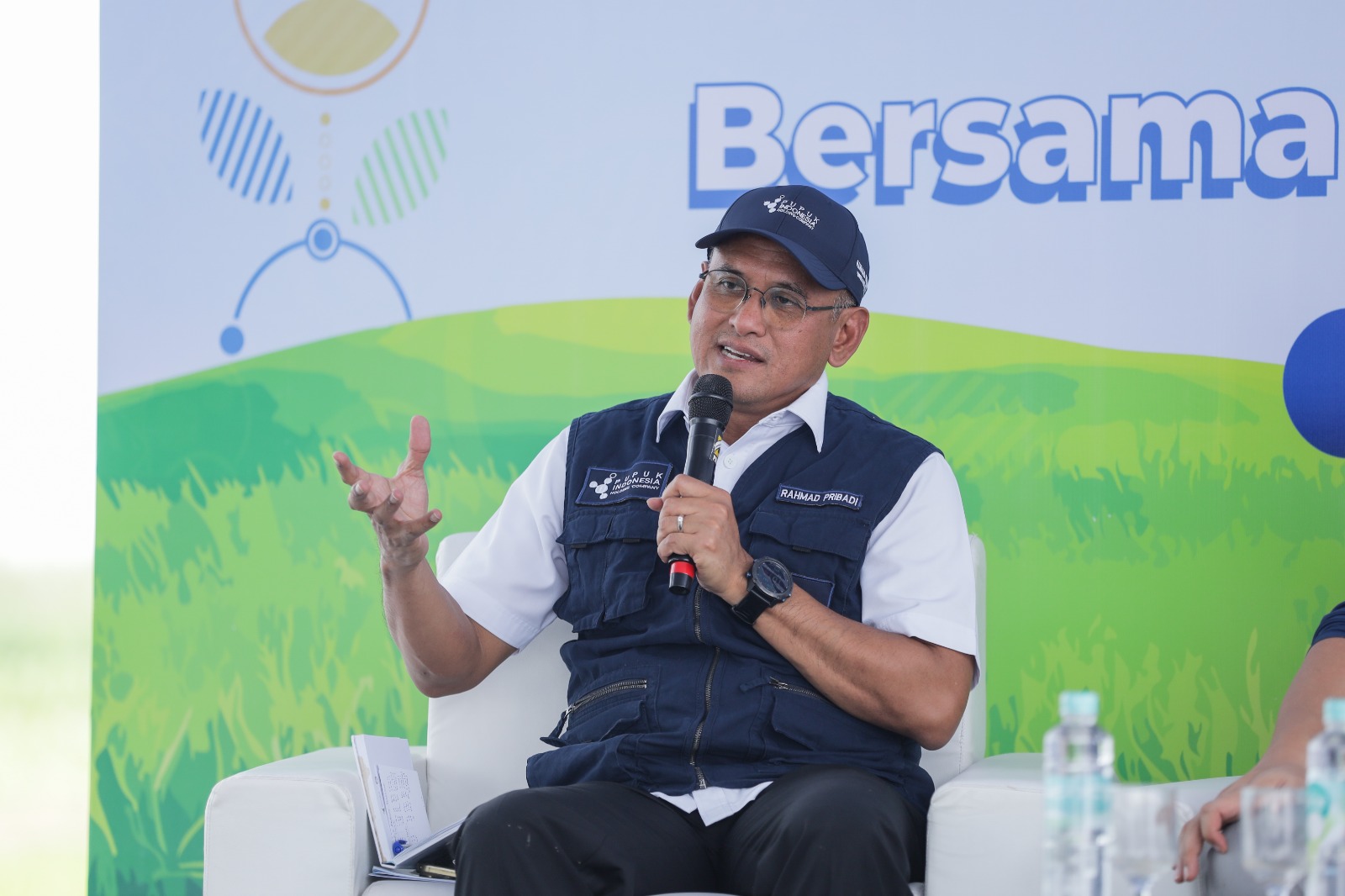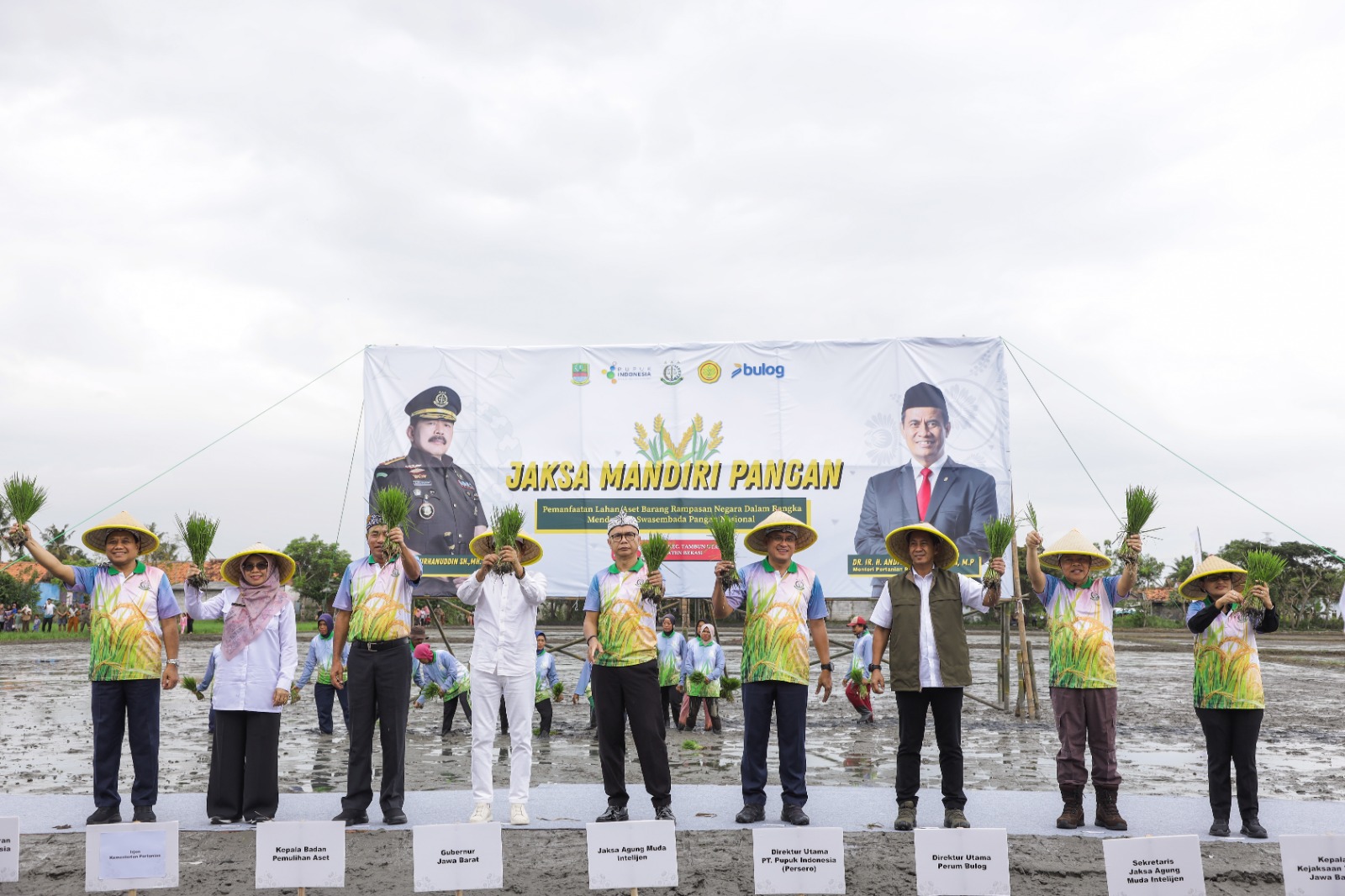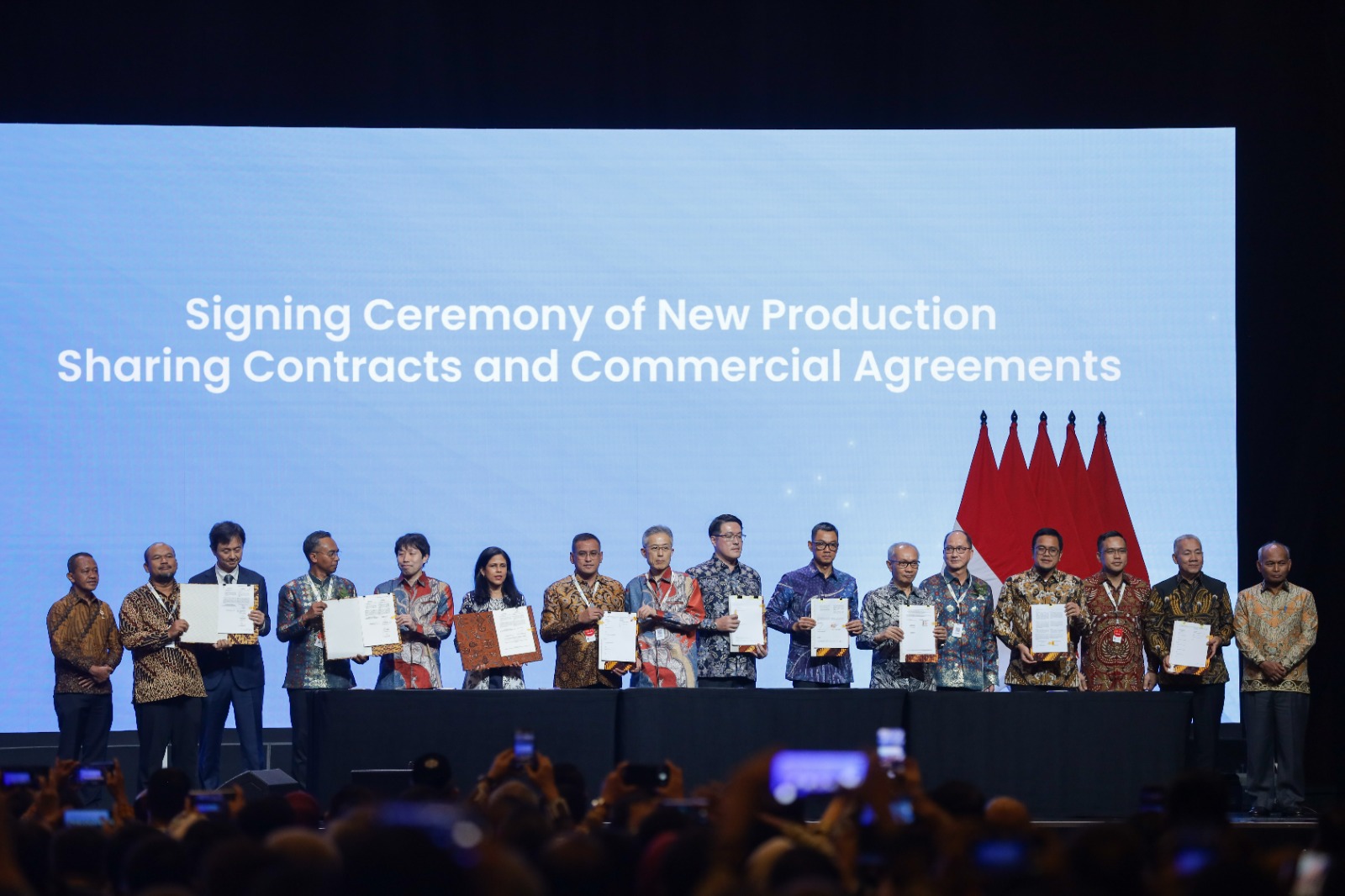Kementerian BUMN Dorong Pupuk Indonesia Kembangkan Amonia

JAKARTA – Kementerian BUMN meminta PT Pupuk Indonesia untuk memainkan peranan dalam penggunaan energi bersih salah satunya melalui penggunaan amonia. Wakil Menteri I BUMN Pahala Mansury mengatakan, penggunaan amonia biru dan hijau di dunia akan terus meningkat di masa depan.
“Beberapa prediksi yang dilakukan oleh lembaga think tank menyebut 12 persen dari energi dunia jelang 2050 akan menggunakan hidrogen sebagai sumber energi dan saya rasa ini bisa menjadi kunci bagi pemulihan ekonomi Indonesia. PT Pupuk Indonesia bisa mengembangkan amonia biru dan hijau dengan cara bekerja sama dengan sejumlah pihak baik dari dalam negeri seperti Pertamina dan juga dengan pihak luar,” kata Pahala saat menjadi pembicara kunci di ajang Pupuk Indonesia Clean Ammonia Forum (PICAF) 2023 di Jakarta, Kamis (30/2/2023).
Pahala menambahkan, penggunaan amonia bisa membantu target pemerintah dalam mencapai target emisi nol bersih pada 2030. Karena itu sesuai dengan SE Menteri BUMN terkait dekarbonisasi yang baru saja diterbitkan, Pahala meminta PT Pupuk Indonesia dan BUMN lainnya yang mempunyai kontribusi besar dalam pengurangan emisi nasional untuk membuat peta jalan dalam penggunaan energi bersih.
Dalam rangka menciptakan ekosistem amonia, PT Pupuk Indonesia menggelar Pupuk Indonesia Clean Ammonia Forum (PICAF) 2023. Direktur Utama PT Pupuk Indonesia Bakir Pasaman mengatakan, forum ini diluncurkan sebagai bentuk dukungan untuk mempromosikan ekosistem amonia bersih (rendah karbon).
Menurut Bakir, Pupuk Indonesia berharap melalui PICAF 2023 bisa mempercepat implementasi inovasi teknologi dan pengembangan kebijakan untuk memperkuat rantai nilai amonia bersih. Hal ini merupakan perpanjangan dari komitmen Pupuk Indonesia untuk mendukung Tujuan Pembangunan Berkelanjutan Indonesia.
“Pupuk Indonesia, saat ini, telah memiliki pengalaman lebih dari 50 tahun di industri amonia. Oleh karena itu, keahlian tersebut memungkinkan kami untuk melihat potensi amoniak bersih untuk mendukung transisi energi rendah karbon. Dengan pengembangan amonia bersih, Pupuk Indonesia berkomitmen untuk berperan aktif dalam mendukung pencapaian emisi nol bersih, yang menargetkan untuk mengurangi emisi karbon setara dengan lima juta ton CO2 pada tahun 2050,” kata Bakir.
Bakir berharap, inisiatif pengembangan ekosistem amonia bersih akan memicu efek berlipat bagi perekonomian Indonesia, sekaligus mendukung komitmen Indonesia untuk mencapai emisi nol bersih. Karena itu, Bakir optimistis, PICAF 2023 dapat memberikan manfaat bagi seluruh peserta dan menjadi momentum mendorong terciptanya ekosistem amonia bersih di Indonesia.
Penasihat Khusus Kementerian Energi dan Sumber Daya Mineral (ESDM) Triharyo Soesilo mengungkapkan, sejumlah poin penting yang harus dilakukan oleh PT Pupuk Indonesia jika tertarik mengembangkan amonia biru dan hijau.
Menurut Triharyo, salah satu poin penting yang hingga saat ini belum dilakukan yaitu, menjalin kerjasama dengan perusahaan bawah permukaan yang memiliki kapasitas reservoir (penyimpanan) CO2 untuk bisa sukses mengembangkan Amonia Biru dan Hijau.
“Kembali ke ketertarikan Pupuk Indonesia untuk mengembangkan Amonia Biru dan juga Amonia Hijau, saran saya tentang Kementerian ESDM, nomor satu, kalau ingin melakukan harus bekerja dengan perusahaan di bawah permukaan,” tutur Triharyo.
Tak hanya itu, Triharyo juga mengatakan bahwa diperlukan pemahaman tentang Pasar Karbon untuk mengembalikan sebagian biaya investasi CCS/CCUS Capex dan Opex, guna meningkatkan keekonomiannya.
“Kedua, Anda harus menemukan dan mengembangkan pemasaran karbon sendiri. Anda sangat ahli menjual karbon sendiri, urea, amonia, dan membeli sulfur dan fosfat. Namun, Anda harus mulai mengembangkan keahlian ekonomi karbon,” jelasnya.
Sementara itu, jika PT Pupuk Indonesia tertarik untuk memproduksi Amonia Hijau (Green Ammonia), dibutuhkan pemahaman tentang teknologi Electrolyzer, pemilihan lokasi pabrik dengan biaya listrik yang minimum, serta perlunya memahami permintaan pasar dan harga untuk Amonia Biru dan Hijau.
“Berikutnya untuk Amonia Hijau, Anda memerlukan pemahaman tentang Teknologi Electrolyzer, ini sangat penting untuk produksi Green Ammonia, dan Anda perlu memilih lokasi pabrik dengan biaya listrik minimum,” ujarnya.
Plt.Direktur Jenderal Industri Kimia, Farmasi dan Tekstil (IKFT) Kementerian Perindustrian Ignatius Warsito mengungkapkan, permintaan amonia global diprediksi mencapai 688 juta ton pada 2050. Jumlah ini meningkat tiga kali dibandingkan permintaan pada 2025.
“Biaya produksi amonia terbarukan untuk pabrik baru diperkirakan turun menjadi USD 310-610 per ton pada tahun 2050. Saat ini, biaya produksi amonia berbahan dasar gas alam dan batu bara yaitu USD 110-340 per ton. Carbon Capture Storage (CCS) akan menambah biaya sebesar USD 100-150 per ton, sehingga biaya produksi rendah karbon berbasis fosil menjadi USD 210-490 per ton,” jelas Warsito.
Warsito menambahkan, proyeksi produksi amonia dengan skenario membatasi kenaikan suhu 1,5˚C adalah saat ini sebagian besar amonia dihasilkan dari gas alam 72% dan batu bara 22). Kata Warsito, kapasitas gabungan semua proyek amonia terbarukan adalah 15 Mt pada tahun 2030 yaitu 8% dari produksi amonia global saat ini.
“Biaya produksi amonia terbarukan untuk pabrik baru diperkirakan turun menjadi USD 310-610 per ton pada tahun 2050. Saat ini, biaya produksi amonia berbahan dasar gas alam dan batu bara yaitu USD 110-340 per ton. Carbon Capture Storage (CCS) akan menambah biaya sebesar USD 100-150 per ton, sehingga biaya produksi rendah karbon berbasis fosil menjadi USD 210-490 per ton,” jelas Warsito.
Warsito menambahkan, proyeksi produksi amonia dengan skenario membatasi kenaikan suhu 1,5˚C adalah saat ini sebagian besar amonia dihasilkan dari gas alam 72% dan batu bara 22). Kata Warsito, kapasitas gabungan semua proyek amonia terbarukan adalah 15 Mt pada tahun 2030 yaitu 8% dari produksi amonia global saat ini.







